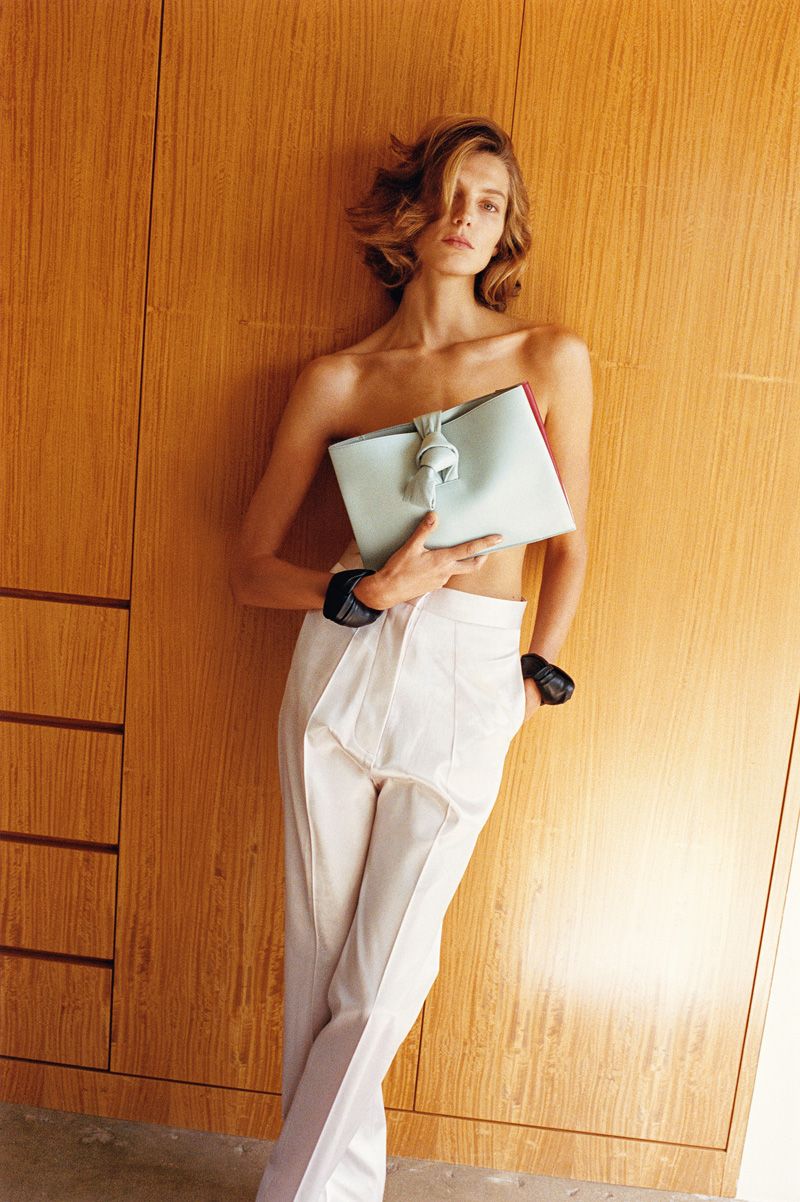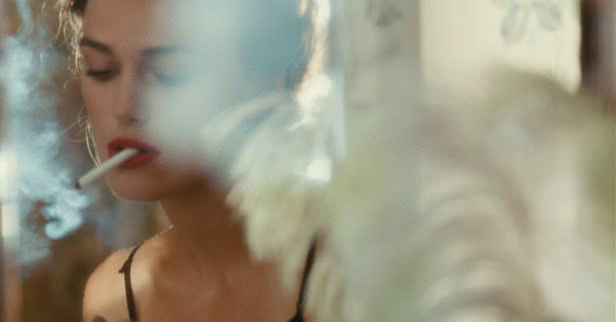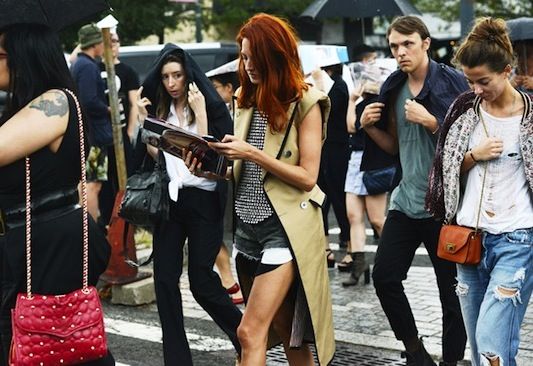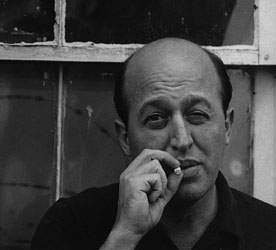Fashion as Abstraction
My school has a student-run organization and publication devoted to fashion called MODA. Since I've been bopping around Paris for the past academic year, I haven't really been up to date on what's been going on in Hyde Park, but I did find myself flipping through the latest
Spring issue the other day. (if "flipping" is even the word--what do you call it when you're
electronically letting your computer do the fake flipping action on the cyber magazine? There needs to be a new term for that accurately conveys how millenial this action is, like talking to your phone when you're lost and ordering pizzas online).
I've already expressed my concern, or curiosity rather, that there doesn't seem to be a particular type of critical discourse with regards to fashion. So when I was looking through this issue I was seriously and pleasantly surprised to find an article ("The Declaration of Fashion" by RJ Gitter pgs. 10-11) that proffered the very same mélange of history and theory that I had been looking for and thinking about these past few weeks (though I shouldn't have been
that surprised since the whole "life of the mind" environment at UChicago pretty much lends itself to intellectualizing anything and then talking about it in this really self-conscious way like within this super self-serving parenthetical statement).
In this article Gitter focuses on the trench coat, which was designed in 1901 by Thomas Burberry as utilitarian outerwear for the British army but has today come to be worn in many ways outside of that context (think: Emma Watson's Burberry campaign, or the whole sexy "naked under the trench coat bit" of which the only example I can give is Angelina Jolie in
Mr. and Mrs. Smith because I have super bad taste in movies. In the scene I'm thinking of she is actually wearing a super sexy dominatrix outfit under her trench coat as she proceeds to break this guy's neck with her bare hands and then escapes from a super tall NYC skyscraper by attaching the handles of her bag to a light and then shimmying all the way down. A scene that is much more impressive visually than it is written down).
Emma Watson for Burberry's 2009/10 Autumn/Winter campaign in a trench coat that I think sticks the most closely to the military original
early example of the original Burberry trench
While the piece posits that the trench coat came to symbolize the "disciplined masculinity of the trained British soldier," thus bringing upon itself a new, abstracted meaning for the civilian population (a conclusion that I can't quite agree with), I was most struck by the broader thesis posed, for which the trench coat served as a good example:
A given article of clothing can undergo abstraction multiple times, assuming new utilities and relinquishing them in favor of new abstracted meanings. Fashion, then, is to make a statement using a vocabulary of abstracted meanings--to construct a style using articles of clothing, or articles of clothing out of stylistic elements--and to relate it back to oneself.
Such a definition gives me a good jumping off point to think of other current trends whose significance I wouldn't want to merely attribute to some sort of constant cyclical pattern (the 80s are in! the 90s are in!), but rather to a kind of movement
toward something. What I mean is, when I think of the movement toward painting's abstraction that occurred during the 20th century I also think about the grand narratives of modernism and formalism at the time: notions of art's autonomy, how in paintings by Mondrian or Pollock one sees a working through of painting's limitations within the medium itself, etc.
Similarly, when I think about how women wear trench coats today--in ways that makes use of its line, shape, and proportions in unconventional ways--the reasons for wearing a trench comes down to a real exploration of fashion as a medium.
In a painting such as this by Caravaggio, what is being represented is significant. Caravaggio's masterly technique of the medium is only secondary as enhancement to this allegorical scene of foul play. [The Cardsharps, Caravaggio. 1594. Kimbell Art Museum, Fort Worth]
Over 300 years later Piet Mondrian painted this abstract Lozenge Composition with Yellow, Black, Blue, Red and Gray in an exploration of painting's limitations and those elements (line, shape, color) that are inherent to painting itself. [1921. Art Institute of Chicago]
taken from the Sartorialist, November 2009 from his "Art of Trench" series for Burberry
This is a look I think woman turn to often with the trench/military coat--wearing shorter layers underneath that expose bare legs. In this instance the proportion and fabric of the coat are a more heavy, "masculine" counterpoint to the ruffled skirt and peep-toe heels.
taken by The Sartorialist in July of 2010. I think this is right around the time when military jackets started to become a big trend. I remember seeing this photo some time in high school and really being struck by the play between the color, pattern, and cut of her floral dress against the jacket.
fashion director Taylor Tomasi Hill sporting a sleeveless trench coat. The cut of the wide lapels lined in black reinforce the trench's classic shape while the rest of her outfit complements the look in a way that really draws attention to the unconventionality of the trench itself.
I want to explore this idea of abstraction in fashion more in coming posts, as I can think of many singular items of clothing that have been transformed--or abstracted, rather--from their original uses, such as the men's Oxford shirt and racer track shoes (think: New Balances). More to come!
P.S. For more looks, Vogue.com has recently put up a slideshow of how trench coats have been styled throughout the years in their editorials. See it
here.



















